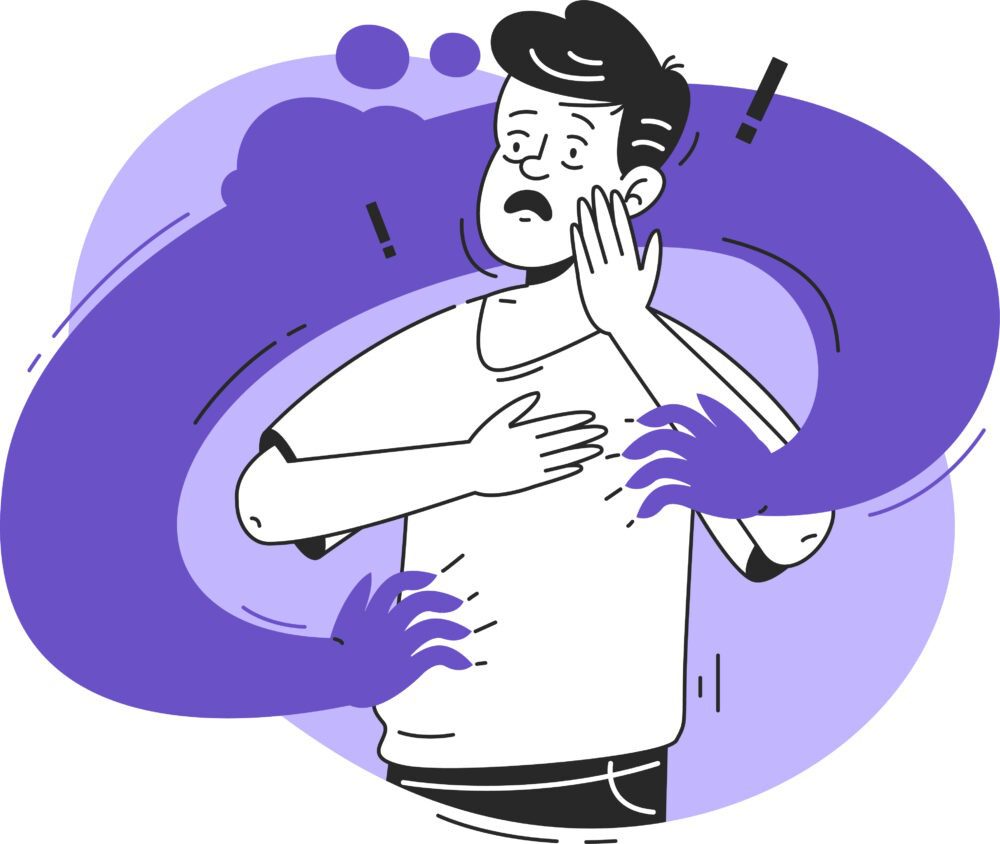Panic disorder is a debilitating mental health condition characterized by sudden and recurring episodes of intense fear and anxiety. Emotional effects are often accompanied by physical symptoms like a racing heart, shortness of breath, and dizziness. These panic attacks can be overwhelming, making it challenging for individuals to lead a normal life. In this article, we will explore the causes and symptoms and the various treatment options available.
Understanding Panic Disorder
Panic disorder is a type of anxiety disorder that affects millions of people worldwide. It can strike unexpectedly, causing a range of distressing symptoms. Common signs include:
- Sudden and intense fear: Panic attacks can occur without apparent reason, leaving the individual terrified and helpless.
- Physical symptoms: Panic attacks often manifest physically. Along with symptoms such as a racing heart, sweating, trembling, and a feeling of choking or suffocation.
- Avoidance behavior: Individuals with panic disorder may avoid places or situations where they fear a panic attack might occur. Such behaviors might lead to significant disruptions in their daily lives.

Causes of Panic Disorder
The exact cause of panic disorder is not well understood. However, a combination of genetic, biological, and environmental factors is believed to contribute to its development. Some common factors associated are:
- Genetic predisposition: Individuals with a family history of anxiety disorders may be more susceptible to developing.
- Neurochemical imbalances: Imbalances in neurotransmitters, such as serotonin and norepinephrine, can play a role in the onset of panic attacks.
- Traumatic experiences: Past traumatic events or high-stress situations can trigger the onset in susceptible individuals.
Treatment Options for Panic Disorder
Fortunately, panic disorder is a treatable condition, and various therapeutic approaches have proven effective in managing and alleviating symptoms. Some of the most common treatment options include:
- Cognitive Behavioral Therapy (CBT): CBT is the main therapeutic approach for treatment. It helps individuals identify and change negative thought patterns and behaviours associated with panic attacks.
- Exposure Therapy: Exposure therapy involves gradually exposing individuals to the situations or places they fear, helping them confront and overcome their anxieties.
- Medication: Antidepressants, anti-anxiety medications, and beta-blockers are often prescribed to manage the symptoms of panic disorder. These medications can help regulate neurotransmitter imbalances and alleviate anxiety.
- Relaxation Techniques: Techniques such as deep breathing, meditation, and yoga can help individuals manage stress and reduce the frequency and intensity of panic attacks.
- Supportive Therapies: Support groups and counseling can provide individuals with a sense of community and understanding, reducing feelings of isolation and offering valuable coping strategies.
Conclusion
Panic disorder can be a debilitating condition, but with the right treatment and support, individuals can learn to manage their symptoms effectively. Seeking help from mental health professionals, understanding the triggers, and adopting healthy coping mechanisms are essential steps toward overcoming. By raising awareness about this condition and promoting access to mental health services, we can create a more compassionate and supportive environment for individuals.
Ready to begin? Start your online therapy journey today. Book your first session now.




